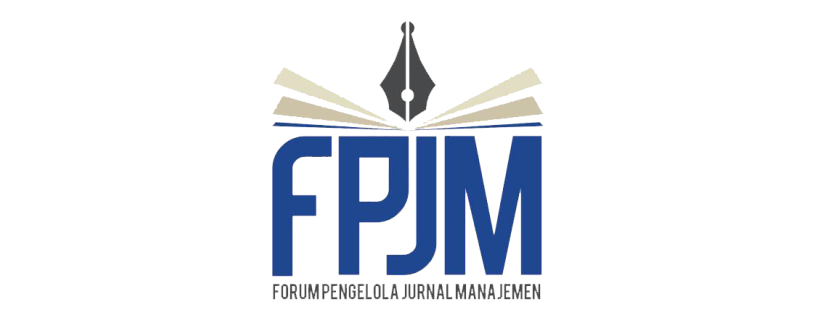Exploring Factors Influencing Technology Adoption among Generation Y: A Study of MOOC Users
DOI:
https://doi.org/10.26905/jmdk.v11i1.10202Keywords:
Behavioral Intention, Gen Y, MOOC, Usage Behavior, UTAUT 2Abstract
The primary objective of this study is to investigate the factors affecting customers’ intention and usage of MOOC (Massive Open Online Course) in generation Y based on the UTAUT 2 (Unified Theory of Acceptance and Use of Technology 2). The paper opted for a quantitative method involving 150 MOOC (Skill Academy and My Skill) users collected by spreading an online questionnaire through social media. The data analysis method used is PLS-SEM. The results show that performance expectations, effort expectations, social influence, facilitating conditions, price values, and habitss have a positive influence on behavioral intention. However, hedonic motivation does not appear to have a significant effect on behavioral intention. Then behavioral intention has a significantly positive influence on usage behavior
Downloads
References
Ahmed, R. R., Štreimikienė, D., & Štreimikis, J. (2021). The extended UTAUT Model and learning management system during COVID-19. Journal of Business Economics and Management, 23(1), 82–104. https://doi.org/10.3846/jbem.2021.15664
Alalwan, A. A., Dwivedi, Y. K., & Rana, N. P. (2017). Factors influencing adoption of mobile banking by Jordanian bank customers: Extending UTAUT2 with trust. International Journal of Information Management, 37(3), 99–110.
https://doi.org/10.1016/j.ijinfomgt.2017.01.002
Alalwan, A. A., Dwivedi, Y. K., Rana, N. P., & Algharabat, R. (2018). Examining factors influencing Jordanian customers’ intentions and adoption of internet banking: Extending UTAUT2 with risk. Journal of Retailing and Consumer Services, 40, 125–138. https://doi.org/10.1016/j.jretconser.2017.08.026
Alalwan, A. A., Dwivedi, Y. K., & Williams, M. D. (2016). Customers’ Intention and Adoption of Telebanking in Jordan. Information Systems Management, 33(2), 154–178. https://doi.org/10.1080/10580530.2016.1155950
Altalhi, M. (2020). Towards understanding the students’ acceptance of MOOCs: A Unified Theory of Acceptance and Use of Technology (UTAUT). International Journal of Emerging Technologies in Learning, 16(2), 237–253.
https://doi.org/10.3991/ijet.v16i02.13639
Altalhi, M. (2021). Toward a model for acceptance of MOOCs in higher education: the modified UTAUT model for Saudi Arabia. Education and Information Technologies, 26(2), 1589–1605.
https://doi.org/10.1007/s10639-020-10317-x
Anand Shankar Raja, M., & Kallarakal, T. K. (2021). “COVID-19 and students perception about MOOCs†a case of Indian higher educational institutions. Interactive Technology and Smart Education, 18(3), 450–474.
https://doi.org/10.1108/ITSE-07-2020-0106
Azrina, F., Librarian, Z., Tun, P., Razak, A., Teknologi, U., & Pinang, M. P. (2015). Acceptance of Massive Online Open Course (MOOCs) Module among students: the case of UiTM Pulau Pinang. Journal of Academic Library Management (AcLiM), 1(2). https://doi.org/10.24191/aclim.v1i2.11
Chakraborty, D., Dash, G., Kiefer, K., & Bhatnagar, S. B. (2021). Stop hailing, start apping: adoption of app-cab services in an emerging economy. Foresight. https://doi.org/10.1108/FS-09-2020-0088
Chaveesuk, S., Khalid, B., Bsoul-Kopowska, M., Rostanska, E., & Chaiyasoonthorn, W. (2022). Comparative analysis of variables that influence behavioral intention to use MOOCs. PLoS ONE, 17(4 April).
https://doi.org/10.1371/journal.pone.0262037
Davis, F. D., Bagozzi, R. P., & Warshaw, P. R. (1989). User acceptance of computer technology: a comparison of two theoretical models. Management Science, 35(8), 982–1003. https://doi.org/10.1287/mnsc.35.8.982
Davoli, F., Meyer, N., Pugliese, R., & Zappatore, S. (2010). Remote instrumentation and virtual laboratories. In Remote Instrumentation and Virtual Laboratories. Springer US.
https://doi.org/10.1007/978-1-4419-5597-5
Duarte, P., & Pinho, J. C. (2019). A mixed methods UTAUT2-based approach to assess mobile health adoption. Journal of Business Research, 102, 140–150. https://doi.org/10.1016/j.jbusres.2019.05.022
GarcÃa Botero, G., Questier, F., Cincinnato, S., He, T., & Zhu, C. (2018). Acceptance and usage of mobile assisted language learning by higher education students. Journal of Computing in Higher Education, 30(3), 426–451.
https://doi.org/10.1007/s12528-018-9177-1
Hair, J. F., Black, W. C., Babin, B. J., & Anderson, R. E. (2019). Multivariate data analysis. Eighth Edition. www.cengage.com/highered
Haron, H., Hussin, S., Yusof, A. R. M., Samad, H., & Yusof, H. (2021). Implementation of the UTAUT Model to understand the technology adoption of MOOC at Public Universities. IOP Conference Series: Materials Science and Engineering, 1062(1). https://doi.org/10.1088/1757-899X/1062/1/012025
Huang, W. H. D., Hood, D. W., & Yoo, S. J. (2013). Gender divide and acceptance of collaborative Web 2.0 applications for learning in higher education. Internet and Higher Education, 16(1), 57–65. https://doi.org/10.1016/j.iheduc.2012.02.001
Impey, C., & Formanek, M. (2021). MOOCs and 100 days of COVID: Enrollment surges in massive open online astronomy classes during the coronavirus pandemic. Social Sciences & Humanities Open, 4(1), 100177.
https://doi.org/10.1016/j.ssaho.2021.100177
International Labor Organization. (2021). Employment and decent work for peace and resilience.
https://ecampus.itcilo.org/course/view.php?id=2041
Khalid, B., Chaveesuk, S., & Chaiyasoonthorn, W. (2021). Moocs adoption in higher education: A management perspective. Polish Journal of Management Studies, 23(1), 239–256.
https://doi.org/10.17512/pjms.2021.23.1.15
Khalid, B., & Kot, M. (2021). The impact of accounting information systems on performance management in the banking sector. IBIMA Business Review, 2021. https://doi.org/10.5171/2021.578902
Khechine, H., Lakhal, S., & Ndjambou, P. (2016). A meta-analysis of the UTAUT model: Eleven years later. Canadian Journal of Administrative Sciences, 33(2), 138–152. https://doi.org/10.1002/cjas.1381
Kuimova, M., Burleigh, D., Uzunboylu, H., & Bazhenov, R. (2018). Positive effects of mobile learning on foreign language learning. TEM Journal, 7(4), 837–841. https://doi.org/10.18421/TEM74-22
Martins, C., Oliveira, T., & PopoviÄ, A. (2014). Understanding the internet banking adoption: A unified theory of acceptance and use of technology and perceived risk application. International Journal of Information Management, 34(1), 1–13. https://doi.org/10.1016/j.ijinfomgt.2013.06.002
Máté, D., Erdei, E., Zeynvand Lorestani, V., Popp, J., & Oláh, J. (2020). Can internet in schools and technology adoption stimulate productivity in emerging markets? Economics and Sociology, 13(1), 182–196.
https://doi.org/10.14254/2071-789X.2020/13-1/12
Meet, R. K., Kala, D., & Al-Adwan, A. S. (2022). Exploring factors affecting the adoption of MOOC in Generation Z using extended UTAUT2 model. Education and Information Technologies, 27(7), 10261–10283. https://doi.org/10.1007/s10639-022-11052-1
Mozahem, N. A. (2021). The online marketplace for business education: An exploratory study. International Journal of Management Education, 19(3). https://doi.org/10.1016/j.ijme.2021.100544
Mulik, S., Srivastava, M., & Yajnik3, N. (2018). Extending UTAUT Model to examine MOOC adoption. NMIMS School of Business Management, 2.
Nurhudatiana, A., Anggraeni, A., & Putra, S. (2019). An exploratory study of MOOC adoption in Indonesia. ACM International Conference Proceeding Series, 97–101. https://doi.org/10.1145/3337682.3337690
Raza, S. A., Qazi, W., Khan, K. A., & Salam, J. (2021). Social isolation and acceptance of the Learning Management System (LMS) in the time of COVID-19 Pandemic: an expansion of the UTAUT Model. Journal of Educational Computing Research, 59(2), 183–208. https://doi.org/10.1177/0735633120960421
Sitar-Taut, D.-A., & Mican, D. (2021). Mobile learning acceptance and use in higher education during social distancing circumstances: an expansion and customization of UTAUT2. Business Information Systems Department. https://doi.org/10.1108/OIR
Tarhini, A., Deh, R. M., Al-Busaidi, K. A., Mohammed, A. B., & Maqableh, M. (2017). Factors influencing students’ adoption of e-learning: A structural equation modeling approach. Journal of International Education in Business, 10(2), 164–182. https://doi.org/10.1108/JIEB-09-2016-0032
Teo, T., & Noyes, J. (2014). Explaining the intention to use technology among pre-service teachers: a multi-group analysis of the Unified Theory of Acceptance and Use of Technology. Interactive Learning Environments, 22(1), 51–66.
https://doi.org/10.1080/10494820.2011.641674
TvaronaviÄienÄ—, M., Mazur, N., Mishchuk, H., & Bilan, Y. (2022). Quality of life of the youth: assessment methodology development and empirical study in human capital management. Economic Research-Ekonomska Istrazivanja, 35(1), 1088–1105.
https://doi.org/10.1080/1331677X.2021.1956361
Venkatesh, V., Smith, R. H., Morris, M. G., Davis, G. B., Davis, F. D., & Walton, S. M. (2003). User acceptance information technology: toward a unified view. MIS Quarterly, 27, 425–478.
Venkatesh, V., Thong, J. Y., & Xu, X. (2012). Consumer acceptance and use of information technology: extending the unified theory of acceptance and use of technology. MIS quarterly, 157-178.
Venkatesh, V., & Zhang, X. (2010). Unified theory of acceptance and use of technology: U.S. vs. China. Journal of Global Information Technology Management, 13(1), 5–27.
Downloads
Published
Issue
Section
License
Authors who publish with this journal agree to the following terms:
(1)Â Copyright of the published articles will be transferred to the journal as the publisher of the manuscripts. Therefore, the author confirms that the copyright has been managed by the journal.
(2) Publisher of Jurnal Penelitian is University of Merdeka Malang.
(3) The copyright follows Creative Commons Attribution–ShareAlike License (CC BY SA): This license allows to Share — copy and redistribute the material in any medium or format, Adapt — remix, transform, and build upon the material, for any purpose, even commercially.












